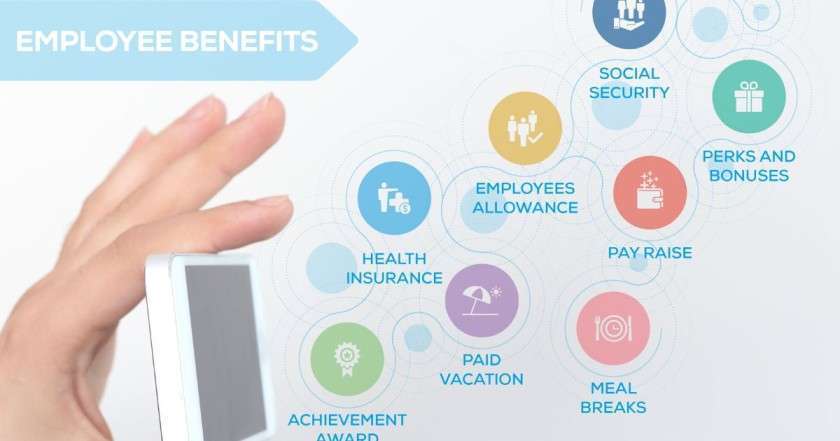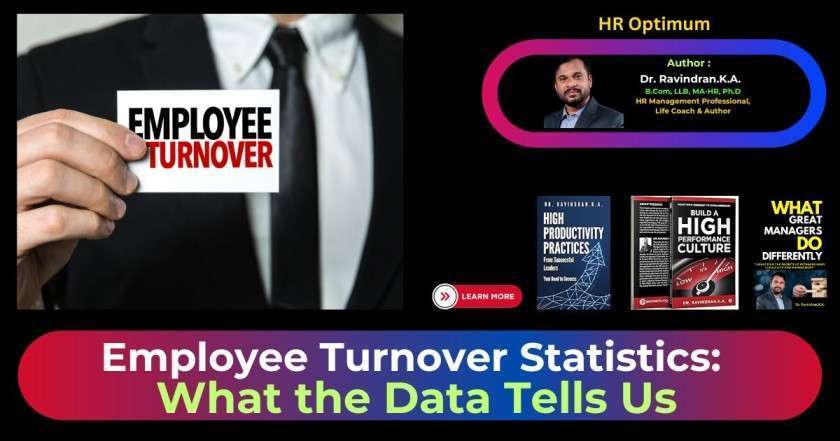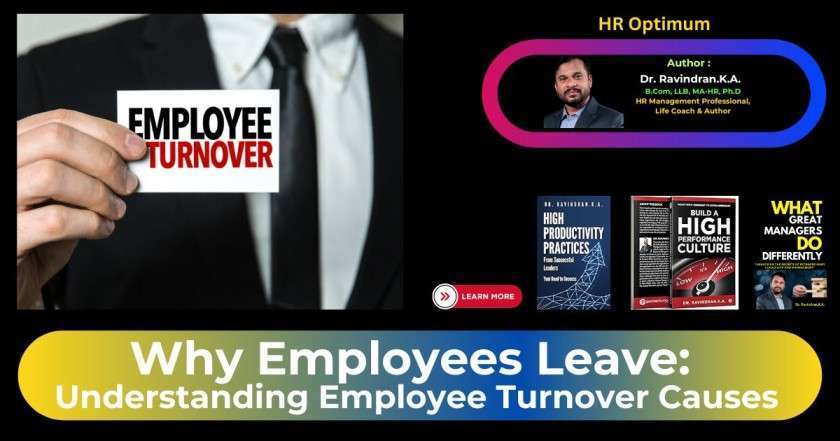“The True Cost of Employee Turnover: How It Affects Your Bottom Line”
Ever wondered about the real cost of losing employees in your company? It’s not just about the money for hiring and training new people. High turnover has hidden costs that hurt your profits a lot. But how much does this really cost you, and what can you do to stop it?
Thank you for reading this post, don't forget to subscribe!
Key Takeaways
- Employee turnover can have a big financial hit on a company. Costs range from 16-20% of an employee’s salary for basic jobs to up to 213% for top skills.
- Turnover costs include direct things like hiring and training, and indirect ones like lost productivity and team morale.
- High turnover is often due to a bad company culture, no growth chances, and not enough pay and benefits.
- To fix turnover, you need to work on the company culture, help employees grow, and offer good pay and benefits.
- Lowering employee turnover saves money and keeps a happy, productive team that helps your business succeed.
Understanding Employee Turnover and Its Impact
Employee turnover is key to managing a workforce well. It’s the percentage of employees who leave a company, either by choice or not. It’s linked to the retention rate, which shows how many employees stay with the company.
What Is Employee Turnover?
Voluntary turnover means an employee chooses to leave. Involuntary turnover is when the employer fires an employee. Both types affect a company’s work and finances.
The True Cost of Employee Turnover
The real cost of employee turnover is often not fully understood. It can be very high. Losing an employee might cost a company half to two times the employee’s salary, based on their job level and role complexity. These costs of employee turnover include hiring, training, and the loss of knowledge, which can also affect team morale and productivity.
“The true cost of employee turnover is often underestimated, but it can be staggeringly high.”
Knowing the real cost of employee turnover is vital for companies. They need to keep a strong, productive team and protect their profits. By understanding what causes high turnover, companies can work on keeping employee retention rate up and lessen the effects of this big challenge.
Direct Costs of Employee Turnover
Employee turnover can really hit a company’s profits hard. Costs like recruitment, hiring, onboarding, and training add up fast. This is especially true for companies with high turnover.
Recruitment and Hiring Expenses
Getting a new employee costs a lot. You have to pay for job ads, interviews, and background checks. A recent study found the average cost to hire someone in the U.S. is $4,129. This covers the time and effort to find the perfect candidate.
Onboarding and Training Costs
After hiring, companies spend more to make sure new employees can do their jobs well. This includes making training materials and the time managers and experts spend teaching them. These costs can quickly increase the total cost of hiring new people.
| Cost Type | Average Cost |
|---|---|
| Recruitment and Hiring | $4,129 per hire |
| Onboarding and Training | Varies based on industry and role |
| Total Cost of Vacancy | Approximately 42 days to fill a position |
High employee turnover can really hurt a company’s profits. Companies should think about these costs and find ways to keep their employees. This can help them stay competitive and keep their best workers.
Indirect Costs of Employee Turnover
Employee turnover has more than just direct costs like recruitment and training. The indirect costs can hurt a company’s profits a lot. When an employee leaves, their work must be given to others. This leads to lost productivity and missed deadlines as projects stop or colleagues work too much.
Also, losing a team member affects employee morale and engagement. The loss of a friend and colleague can make others feel frustrated, resentful, and burnt out. This might make them want to leave too. This cycle can hurt the company’s culture and customer service as it tries to stay stable and keep things going.
Lost Productivity and Potential Missed Deadlines
When an employee quits, their tasks must be given to others. This can make everyone work less efficiently as they try to do more. Also, the change can cause missed deadlines as projects get delayed or stopped while the team adjusts.
Depleted Team Morale and Engagement
When a team member leaves, it can really affect the mood and involvement of those who stay. People might feel upset, resentful, or even betrayed. This can make team morale drop. And it can also make employee engagement go down, making the turnover’s bad effects worse on the company’s culture and customer service.
“The true cost of employee turnover is not just the financial burden, but the lasting impact it can have on team dynamics and organizational productivity.”
Cost of Employee Turnover
The cost of losing an employee goes way beyond just money. It hurts the team left behind and the institutional knowledge they share. When skilled people leave, the company may not hit its goals. Customer service can suffer, and the loss of employee experience and skills is huge.
When institutional knowledge leaves, bringing in new people is hard. This makes the problem worse. Also, being known as a place where people don’t stay long can make it hard to get good new employees. This hurts the company’s employer brand and reputation.
Lost Institutional Knowledge and Experience
Older employees know a lot about how things work, the industry, and the company’s inner workings. When they leave, this knowledge goes with them. New people might not work as well, causing delays and unhappy customers.
Diminished Employer Brand and Reputation
A company’s employer brand and reputation help bring in great employees. But high employee turnover can hurt this image. It makes it hard to keep a good view among employees and those who might want to work there. This makes it tough to talent acquisition and can lead to more future turnover.
“Losing key employees can be devastating, not just for the work they do, but for the institutional knowledge and experience they take with them when they leave.”
To deal with employee turnover, you need to do many things. Focus on keeping employees happy, helping them grow, and creating a good work environment. By taking care of your team, you can lessen the effects of turnover and build a strong, dedicated group.
Factors Contributing to High Employee Turnover
Keeping top talent is hard for companies. Knowing what makes employees leave is key. Things like company culture, leadership, growth chances, recognition, pay, and benefits play a big role.
Company Culture and Leadership
A bad company culture can lead to many employees leaving. Workers can spot a work environment that’s toxic fast. It’s marked by poor communication, lack of support, or unhealthy power dynamics.
Good leadership is key to a positive culture. It boosts employee engagement and loyalty. Without a clear vision, fair management, and support, job dissatisfaction and high turnover can happen.
Lack of Growth Opportunities and Recognition
High-performing employees want to grow in their careers. Not having career advancement options, limited training, and not enough recognition makes them feel stuck and not valued. They might leave for better career chances.
Inadequate Compensation and Benefits
Good compensation and benefits are key to keeping employees. If a company doesn’t match industry standards or offer a good work-life balance, employees might feel underpaid and look for better jobs. Keeping a fair and attractive compensation and benefits plan is vital for employee engagement and cutting down on turnover.
“Investing in a positive company culture and providing growth opportunities are key to retaining top talent and reducing employee turnover.”
Conclusion
Employee turnover is a big problem that can hurt a company’s finances and success. By understanding the costs of turnover, both direct and indirect, companies can act to keep their best workers. This helps reduce these losses.
Good strategies for keeping employees should improve onboarding and training. They should also offer chances for growth, recognition, a positive work culture, and good pay and benefits. By focusing on employee retention strategies, companies can lower turnover, increase productivity, and keep their employer brand strong.
Investing in talent management practices that help and engage workers is key for companies to do well in today’s competitive world. By tackling the main reasons for high employee turnover and using full solutions, businesses can make the most of their workers. This leads to sustainable growth.
FAQ
What is the average cost of replacing an employee?
Replacing an employee can cost 16-20% of their yearly salary if they earn less than $75,000. For highly skilled roles, it can be as high as 213% of their salary.
What are the direct costs of employee turnover?
Direct costs include things like hiring, training, and onboarding new employees. On average, it costs $4,129 to replace someone, and it takes about 42 days to fill a position.
What are the indirect costs of employee turnover?
Indirect costs include lost productivity and missed deadlines. They also affect employee morale and engagement, and can harm the company’s culture and customer service.
How can employee turnover impact a company’s bottom line?
Turnover can hurt a company’s profits by disrupting work flow and lowering morale. It can also increase costs. Losing an employee can cost a company half to two times the employee’s salary, based on their position.
What factors can contribute to high employee turnover?
High turnover can come from a bad company culture, poor leadership, and lack of growth chances. It can also be due to low pay, benefits, and work-life balance.
How can companies mitigate the costs of employee turnover?
Companies can reduce turnover costs by improving training and onboarding. They should offer growth opportunities and recognition. A positive work culture and fair pay and benefits also help.
 hroptimum
hroptimum





